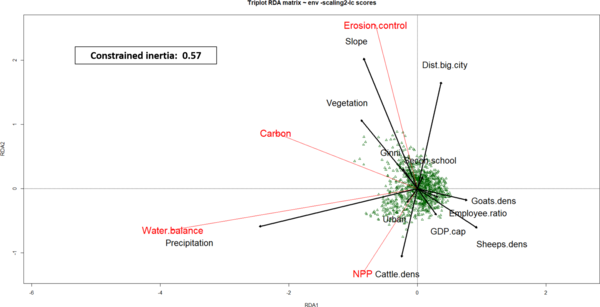The influence of socio-ecological variables on Caatinga vegetation cover and provision of ecosystem services
P 3.3 in Open Poster Session
Introduction
Tropical dry forests are one of ecosystems most impacted by land use change, mainly in development countries where people are very dependent on natural resources. On such context, socioeconomic development are important drivers of ecosystem change and therefore of the provision of ecosystem services (ES).
Material and Methods
We have analysed the relationship between several land use land cover, socioeconomic and ecological drivers on the provision of four key ES on a dry forest in the northeast Brazil (Caatinga): carbon storage, net primary productivity (NPP), water balance and erosion control. We analysed this spatial relationship for 1,086 municipalities inside the Caatinga.
Results
We have found that municipalities more socioeconomically developed, including higher goats and sheep densities, tend to have less vegetation cover and carbon storage. The erosion control is higher where there is more vegetation cover, which in turn is also located in areas far from big cities and hillier. Hence, these are important areas for conservation efforts aiming to avoid desertification. However, contrary to the impact on the land use change, economic drivers had a much less strong relation with services provisioning change. NPP seems to be higher on areas with high cattle densities, which leads us to want to better understand the patterns of productivity between natural areas and agricultural areas.
Conclusions
We warn that socioeconomic development can have unexpected results if not well planned and we should look again to some good programs like ‘Bolsa Verde’, which recognizes the conservationist work of farmers. The Caatinga is still a very neglected ecosystem that needs actions that promote socioeconomic development respecting the goals of the sustainable development. Our results show clear evidence that the socioeconomic development has been reached at the cost of Caatinga natural capital, which means that we are not moving towards sustainability.
Keywords: socioeconomic development, tropical dry forests, sustainable development, land use and land cover change, carbon storage, primary productivity



